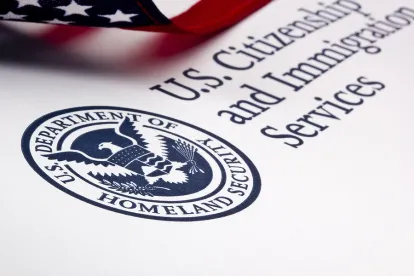On Aug. 28, 2019, U.S. Citizenship and Immigration Services (USCIS) issued new policy guidance “to address requirements for ‘residence’ in statutory provisions related to citizenship, and to rescind previous guidance regarding children of U.S. government employees and members of the U.S. armed forces employed or stationed outside the United States.” USCIS has updated its Policy Manual to clarify the distinction between residence and physical presence in the United States and to clarify that short visits to the United States do not establish residence as well as to state that children of U.S. government employees and U.S. armed forces members residing outside the United States are no longer considered to be “residing in the United States” for purposes of acquiring citizenship under INA 320. This policy will become effective Oct. 29, 2019.
USCIS reemphasizes that a residence is “a principal actual dwelling place in fact, without regard to [a person’s] intent.” Although a person is not required to live in a certain place for a specific period of time in order for that place to be considered his or her residence, a residence is more than a temporary presence, brief stay, vacation, or visit to the United States. Physical presence, on the other hand, refers to the actual time a person is in the United States, regardless of whether he or she has a residence in the United States. Under new USCIS guidelines, children residing abroad with their U.S. citizen government employee or armed forces member parents are not considered to be residing in the United States for acquisition of citizenship, even during leave taken at a property the parent owns in the United States while stationed abroad. Because there is no specific time period of residence required for purposes of acquiring citizenship where a child is born outside the United States to two U.S. citizen parents, USCIS will determine individual cases on the basis of individual merits and evidence presented.
After being announced amid much national attention, it is apparent that USCIS’s latest policy change will only impact a small percent of children born out of the United States to U.S. citizen parents. This policy may affect children residing outside of the United States who were born outside the United States to: 1) non-U.S. citizen parents and then adopted by a U.S. citizen government employee or service member after their birth; 2) non-U.S. citizen parents, such as lawful permanent resident U.S. government employees or service members, who naturalized after their child’s birth; or 3) two U.S. citizen (or one non-U.S. citizen and one U.S. citizen) government employee or service member parents who do not meet the residence or physical presence requirements to transmit citizenship to their child at birth. These parents will now be required to file a Form N-600K under INA 322 to obtain U.S. citizenship for any child who has not acquired citizenship at birth or while residing in the United States rather than the child receiving automatic citizenship. This process must be completed before the child turns 18 years old.
USCIS has stated that these changes were made in order to eliminate any conflicts with the definition of “residence” in INA 322(d) and with Department of State guidance. USCIS’s goal is to limit inconsistent decisions on citizenship claims by USCIS and the Department of State, which may have caused confusion as to the date that children of U.S. service members and government employees stationed abroad became U.S. citizens. Only time will tell if this will be the case.
For additional information, please see: PA-2019-05.



 />i
/>i

